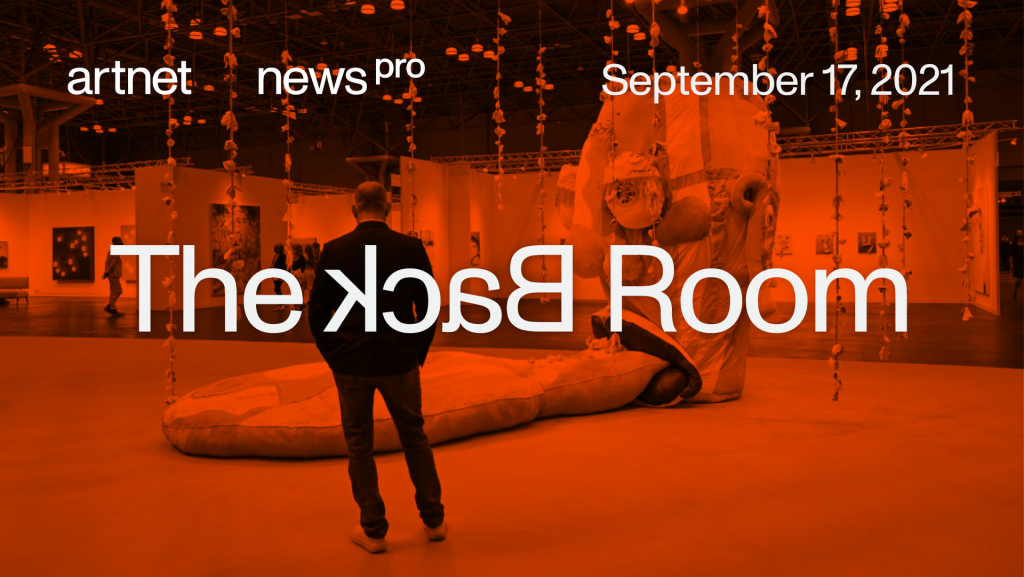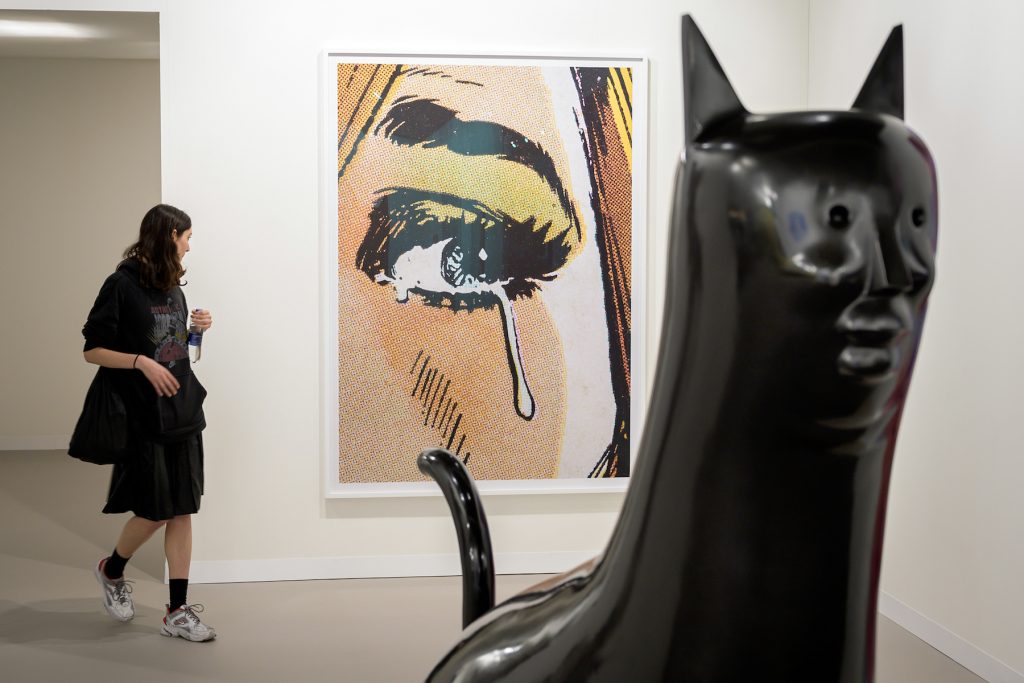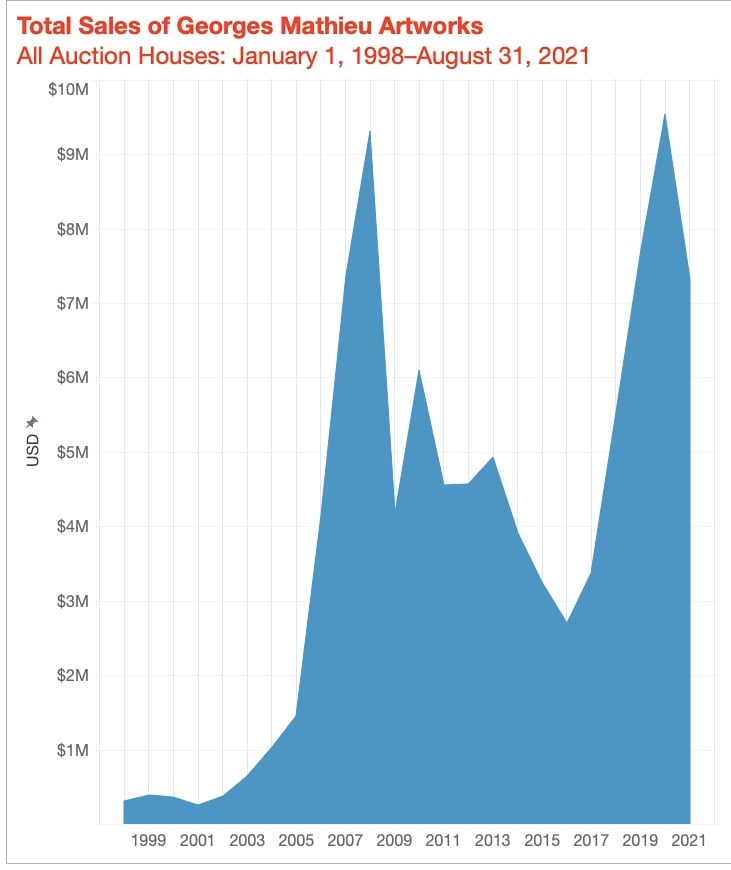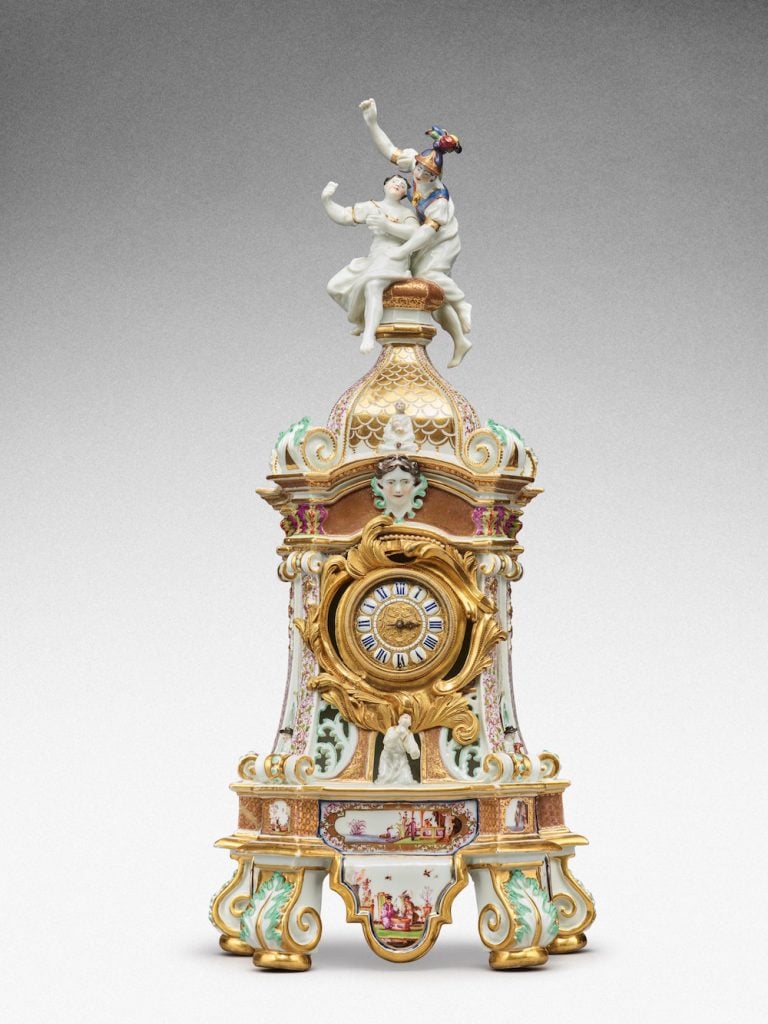The Back Room
The Back Room: Things Fall Apart
This week: the twilight(?) of the art-fair industrial complex, inside MOCA’s executive drama, how to raise an artist from the dead, and more.

This week: the twilight(?) of the art-fair industrial complex, inside MOCA’s executive drama, how to raise an artist from the dead, and more.

Tim Schneider

Every Friday, Artnet News Pro members get exclusive access to the Back Room, our lively recap funneling only the week’s must-know intel into a nimble read you’ll actually enjoy.
This week in the Back Room: the twilight(?) of the art-fair industrial complex, inside MOCA’s executive drama, how to raise an artist from the dead, and much more—all in an 8-minute read (2,387 words).
__________________________________________________________________________________

A visitor looks at an artwork by Anne Collier entitled Woman Crying (Comic) #7 at Art Basel on June 12, 2019. (Photo by Fabrice Coffrini/AFP via Getty Images.)
Is the ground getting shaky beneath maximalist international art fairs? The realities of the past few weeks invite that question.
You’re not alone if you noticed last week’s Armory Show was missing three of the four mega-galleries: Gagosian, Hauser and Wirth, and Pace Gallery. Despite healthy sales and executive director Nicole Berry’s assertion that the Armory Show is “New York’s art fair,” by my count at least 20 other high-end New York dealers also skipped the event this year.
There are extenuating circumstances, of course, headlined by the topsy-turvy 2021 calendar.
But the tremors go beyond any one big expo:
I think the shakiness extends beyond the coronavirus, though—and a new framework for thinking through the Big Tech ecosystem may help us understand what’s happening.
The Platform Delusion
In his new book, The Platform Delusion: Who Wins and Who Loses in an Age of Tech Titans, Jonathan A. Knee contends that Amazon, Apple, Facebook, Google, and Netflix are fundamentally misunderstood. Their status as “platforms” (asset-light, primarily digital companies reaching for massive scale) is normally seen as their greatest strength… but has quietly proven to be their greatest weakness.
The problem is the network effect, the principle that every new user added makes a company or service even better for its existing users. Why?
But in fact, Knee argues, the trade-off doesn’t work as advertised. Going digital-first…
The network effect is more a narrative than a strategy, then, and it has an analogue in the gallery business.
Art-Fair Folklore
For dealers, the rationale for continuously exhibiting at more and larger fairs always hinged on an alternative network effect—one based on locations rather than users.
More physical storefronts (even if temporary) = more client connections, which can theoretically lead to vastly more sales.
But in fact, many dealers have found, the trade-off doesn’t work as advertised. Instead, continuously committing to a full slate of fairs headlined by the very biggest…
So despite how clunky and limited they often were, the adjustments forced by the pandemic have made the reasoning behind art-fair maximalism look more like art-fair folklore than ever. And actions may (finally) be following suit.
__________________________________________________________________________________
COVID alone did not wake dealers up to the risks of automatically gorging on fairs. Even some of the mightiest galleries have been paying lip service to reducing their annual expo commitments for years. Some had already started to match words with deeds, at least when it came to smaller regional fairs, before the social-distancing era. The system was probably one shock away from jolting this structural shift into motion no matter what that shock was.
But even if the pandemic turns out to be the industry’s final push into greater art-fair selectivity, we were past due—and a whole new set of hard questions about gallery sustainability awaits.
__________________________________________________________________________________
Here are 25 items that made a mark around the industry this week, including the palace intrigue at the Museum of Contemporary Art in Los Angeles courtesy of the latest Wet Paint (and the column’s new long-term captain, Annie Armstrong!).
Art Fairs
At last week’s TEFAF Online, Amsterdam’s Rijksprentenkabinet snapped up a Venetian School work from Nicolaas Teeuwisse OHG; the Clark Art Institute picked up an Italian scene by Hortense Haudebourt-Lescot from Gallery 19C; and Belgium’s Groeningemuseum acquired a 16th-century portrait attributed to Gillis Claeissens from Caretto & Occhinegro.
Armory Show prize roundup: the $20,000 Pommery Prize went to Jane Lombard Gallery for Michael Rakowitz’s The Invisible Enemy Should Not Exist, Room F, Section 1, Northwest Palace of Nimrud (2019); the Armory Presents Booth Prize (which covers all fair costs) went to Saradipour Art in Tehran for their presentation of Moslem Khezri’s We Keep Reviewing (2019–20).
Berlin-based emerging artist Sung Tieu won the Frieze Artist Award and will debut a major new commission during the London fair in October.
Auction Houses
Sotheby’s will hold a dedicated single-owner sale of 55 works from the collection of the late dealer Richard Feigen in New York on October 18. The available lots will stretch from the 14th to the 20th century.
Sotheby’s will also sell more than 1,000 lots from the estate of the late designer Karl Lagerfeld across eight auctions in Monaco and Paris this December, and in Cologne in the spring.
Christie’s tapped comms veteran Natasha Le Bel, formerly an executive vice president at Finn Partners, to be its new global head of communications.
Galleries
Institutions
NFTs and More
The German artist Katharina Grosse is dropping a $999 NFT inspired by her Hamburger Bahnhof exhibition earlier this year on Saturday, September 18, available for 24 hours only on Johann König‘s Misa platform.
Institut, the art-world NFT platform by London gallery Unit,will open bidding for works by the 100 artists included in its first exhibition, curated by Kenny Schachter, on Monday, September 20 (on view IRL at Unitor in the metaverse on Arium).
__________________________________________________________________________________

© 2021 Artnet Price Database and Artnet Analytics
Flamboyant French action painter Georges Mathieu’s lively practice, all-encompassing bravado, and royalist politics swung his work in and out of fashion between his emergence on the international art scene in the 1950s and his death in 2012. But a flurry of high-level activity in the private and public markets have pushed demand for his theatrical abstractions to new heights in recent years.
During his lifetime, Mathieu never saw annual auction sales of his work rise higher than the $9.3 million registered in 2008. In pandemic-hampered 2020, however, Mathieu lots capped a multiyear comeback by ringing up more than $9.5 million—a new apex that nevertheless looks toppable by the close of 2021.
What changed?
The results are undeniable:
__________________________________________________________________________________
“Will we ever see that toilet again? Personally, I wonder if it’s in the shape of a toilet to be perfectly honest.”
—Thames Valley police commissioner Matthew Barber resurfacing the theory that Maurizio Cattelan’s America, the $6 million, 18-karat-gold commode stolen from Blenheim Palace in 2019, had more illicit value melted down and sold as bullion than as artwork.
__________________________________________________________________________________
Here’s everything you’re dying to know about how recently convicted fraudster Angela Gulbenkian managed to pocket $1.4 million for Yayoi Kusama’s Yellow Pumpkin, a sculpture that was never hers to sell. (Artnet News Pro)
The “saved you a click” version of her strategy:
__________________________________________________________________________________
After more than 3.2 million tickets sold at up to $70 each, “Immersive Van Gogh” is now the most successful event on earth by Ticketmaster sales—confirming that either art can conquer pop culture in certain packaging, we are all doomed, or both. (Bloomberg)
__________________________________________________________________________________
For rearview-mirror guidance on the frenzy of Armory Week 2021, the Artnet News Pro gang rounded up six rising-star artists from NYC’s fall fairs. (Artnet News Pro)
Unpaid internships still proliferate across all sectors of the international art trade despite reform efforts and class action lawsuits. (The Art Newspaper)

A highly important documentary and dated Meissen mantel clock case. Image courtesy Sotheby’s.
__________________________________________________________________________________
Date: 1727
Seller: Heirs of Dr. Franz and Margarethe Oppenheimer
Estimate: $200,000 to $400,000
Sale Price: $1.6 million (with fees)
Sold at: Sotheby’s New York
Sale Date: Tuesday, September 14
__________________________________________________________________________________
Based on the findings of the Restitution Commission of the Netherlands, the Rijskmuseum recently agreed to return 117 works of 18th century porcelain by the renowned European manufacturer Meissen to descendants of Dr. Franz and Margarethe Oppenheimer, who were forced to vacate the valuables while fleeing the Nazis in 1936. The heirs decided to sell the trove through Sotheby’s this week—and the strategy worked better than anyone expected, bringing $15 million against a presale high expectation of just $2 million.
What happened? Turns out the Rijksmuseum desperately wanted back what it had just restituted. The museum bought more than half the lots offered at the auction, partly thanks to a generous contribution from the Rembrandt Association.
Among the works completing this double Circle of Collecting Life was this mantel clock case, the sale’s top earner. Boasting a gilt-bronze mount (most likely of German origin from the mid-18th century) and a movement signed “Barrey à Paris” (dated circa 1700), the piece will return to Amsterdam’s best-known museum after quadrupling its high estimate. I don’t think the outcome qualifies as poetic justice for the heirs, exactly, but it’s a lot closer to that than the alternative—as well as a noteworthy lesson in the new economics of restitution.
__________________________________________________________________________________